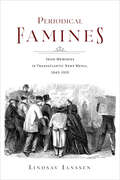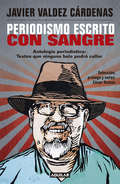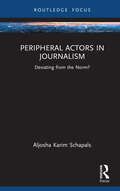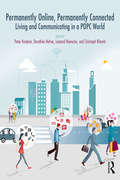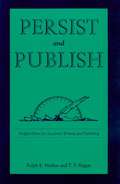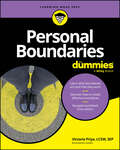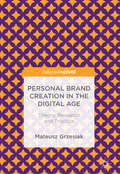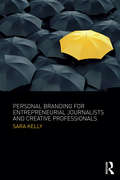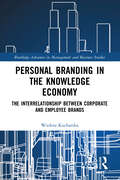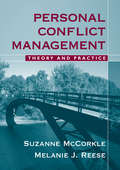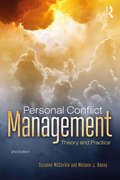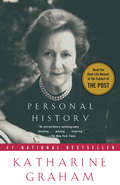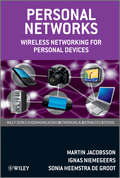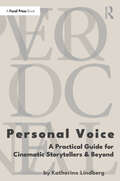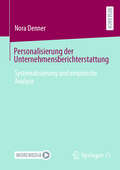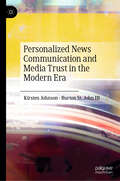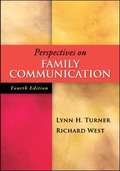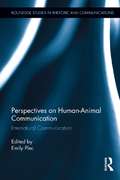- Table View
- List View
Periodical Famines: Irish Memories in Transatlantic News Media, 1845–1919 (Irish Culture, Memory, Place)
by Lindsay JanssenLong recognized as Ireland's greatest demographic disaster in recent history, the Great Famine of 1845–1851 has shaped Irish identities around the world. From the monuments erected to commemorate its victims to the political rhetoric involving it to the novels, poems, songs, and films that it continues to inspire, the Famine remains a crucial part of Irish memory. Famine memories have also reached across history and national borders to establish links with cultural groups who were not directly connected to the Irish diaspora.Periodical Famines reveals how, within the transatlantic Irish periodical market between 1845 and 1910, Irish, Irish American, and Irish Canadian newspapers and magazines acted as carriers and shapers of cultural identities. Lindsay Janssen argues that famine memory was deployed transhistorically to help represent other crucial events in the Irish past, and periodicals used Famine recollections transnationally to give new meaning to events outside of Ireland, such as labor issues in the United States and the Second Boer War. Moving beyond individual writings to interrogate how different texts printed within a periodical issue influenced each other and affected audiences' attitudes to Irish hunger and distress, Janssen's cotextual approach reveals the intricate and sometimes divergent paths that Famine memory traveled through in the decades during and after its onset.Drawing upon a substantial corpus of creative and nonfiction periodical publications (including nearly 600 works of poetry and prose fiction), Periodical Famines is a thorough analysis of transatlantic Irish periodical culture during and after the Great Famine, demonstrating how periodicals' transmission of famine memories shaped global cultures.
Periodismo escrito con sangre
by Javier Valdez CárdenasPeriodismo escrito con sangre es un homenaje al periodista ejecutado por decir la verdad, por dar voz a los desposeídos, a quienes tienen en el rostro la herida viva, ardiente, ocasionada por el crimen organizado y la indiferencia o complicidad de las autoridades. Selección, prólogo y notas: César Ramos. El 15 de mayo de 2017 fue asesinado en Culiacán el periodista Javier Valdez Cárdenas, autor de una serie de libros excepcionales para entender el fenómeno del narco y el voraz crecimiento de la delincuencia organizada en México. Periodista valiente y puntual, crítico hasta el extremo con la realidad de nuestro país, su trabajo logró reconocimiento internacional y, sobre todo, por una pluma vibrante, conmovedora, profundamente humana. Se recogen en este libro trabajos de sus libros Miss Narco, Los morros del narco, Levantones, Con una granada enla boca, Huérfanos del narco y Narcoperiodismo. Hay un denominador común en las crónicas, investigaciones y reportajes de Valdez Cárdenas: su acercamiento intenso al ser humano, a las madres muertas en vida por no saber de sus hijos; al adicto que mira derrumbarse toda ilusión en un escenario de violencia impasible; a la víctima del levantón, del ejercicio terrible del sicario; al policía baleado; al niño despojado de toda esperanza en una casa donde se come desgracia; a las jóvenes que cambiaron la ilusión por el infierno del narco, el glamour por la ejecución feroz en un baldío. Queda claro que Javier Valdez Cárdenas vive ahora en sus escritos y justo, imprescindible, es leer su trabajo periodístico porque esa voz no será apagada jamás por ningún balazo.
Peripheral Actors in Journalism: Deviating from the Norm? (Routledge Focus on Journalism Studies)
by Aljosha Karim SchapalsThis book addresses the transformative role that so-called peripheral actors in journalism – emerging outlets diverging from the norms fiercely held by mainstream media outlets – play in today’s news ecosystem. The author charts the rise to prominence of these actors, outlining how they have successfully managed to challenge the authority held by mainstream, legacy outlets, whose claims to be the “storytellers of our time” no longer exclusively pertain to them. Beginning by identifying these peripheral actors specifically, the book then considers whether what they do is “journalism” as traditionally conceived, what their motivations are, and why their role is important in light of journalism’s democratic function in holding power to account. Ultimately, it is argued that, despite the perceived role of peripheral actors as “deviant”, they still demonstrate a surprising degree of ideological continuity in the face of industrial disruption. Drawing on research from Australia, Germany, and the United Kingdom, Peripheral Actors in Journalism is an insightful resource for journalism and media scholars with an interest in alternative media sources.
Permanently Online, Permanently Connected: Living and Communicating in a POPC World
by Leonard Reinecke Christoph Klimmt Peter Vorderer Dorothée HefnerPermanently Online, Permanently Connected establishes the conceptual grounds needed for a solid understanding of the permanently online/permanently connected phenomenon, its causes and consequences, and its applied implications. Due to the diffusion of mobile devices, the ways people communicate and interact with each other and use electronic media have changed substantially within a short period of time. This megatrend comes with fundamental challenges to communication, both theoretical and empirical. The book offers a compendium of perspectives and theoretical approaches from leading thinkers in the field to empower communication scholars to develop this research systematically, exhaustively, and quickly. It is essential reading for media and communication scholars and students studying new media, media effects, and communication theory.
Permission to Speak: How to Change What Power Sounds Like, Starting with You
by Samara BayUse your voice to lead us to a better future with this game-changing guide to redefining what power and authority sound like—from a speech expert who&’s worked with Hollywood&’s biggest stars, political powerhouses, and businesspeople shaking up the status quo.&“I love this book—funny, surprising, stirring, and so important! What a beautiful accomplishment and gift to put into the world.&”—Rachel McAdamsGetting heard is a tricky business: It&’s what you say and how you show up, filtered through your audience&’s assumptions and biases—and maybe even your own. For women, people of color, immigrants, and queer folks, there&’s often a dissonance between how you speak and how we collectively think powerful people should speak: like the wealthy white men who&’ve historically been in charge. But, fortunately, the sound of power is changing.Permission to Speak is your tool kit for making that change. In this revolutionary take on how to use your voice to get what you want, sought-after speech coach Samara Bay offers a fresh perspective on public speaking and a new definition of what power sounds like: namely, you. Blending anecdotes with eye-opening research in leadership, linguistics, and social science, Permission to Speak shows you how to strike the right balance of strength and warmth to land your message; exactly what to do before a high-stakes scenario so that your voice, your mind, and your spirit are ready; and how to turn habits like vocal fry and upspeak into tools. Most important, you&’ll discover your voice story: why you talk the way you do, what&’s wonderful about it, and what you&’ve outgrown.Fiery, fun, and truly profound, Permission to Speak is a personal and cultural reckoning with what speaking in public is and what it can be. This book meets the moment and offers this provocation: When we change what power sounds like, we change who has it.
Persist and Publish: Helpful Hints for Academic Writing and Publishing
by T. F. Riggar Ralph E. MatkinA clear, concise explanation of the requirements for successful academic writing in any field. Includes a particularly useful annotated bibliography.
Personal Boundaries For Dummies
by Victoria PriyaLearn how to create healthy personal and relationship boundaries Boundaries are limits we establish for ourselves and implement through action or communication. Personal Boundaries For Dummies gives you all the basics on what boundaries look like (spoiler: they aren't "one-size-fits-all”), along with step-by-step instructions for figuring out what your boundaries are and communicating them with others. When you start to level-up your boundaries, you might experience pushback from the people in your life, but don’t worry—this book also helps you navigate these challenges. Create clarity, mutual respect, and harmony in all your relationships—especially your relationship with yourself—with this clear and helpful Dummies guide. Explore the different types of boundaries and how they work in relationships Identify your own limits and non-negotiables so you can set boundaries with others Get advice on what to do when people don’t respect your boundaries Learn when to seek professional helpSetting boundaries is a form of self-care, and each of us must create boundaries for our own safety, health, and well-being. Get started with Personal Boundaries For Dummies!
Personal Brand Creation in the Digital Age: Theory, Research And Practice
by Mateusz GrzesiakPresenting a scientific exploration of personal branding and digital communication, this ground-breaking book aims to fill a gap between theory and practice. Describing how social media can increase brand profiles online, it explains basic terms before investigating the cultural context for online personal branding. With a special focus on YouTube, the author provides a comparative analysis of two countries (USA and Poland) to open further avenues for research into this growing area. An essential read for management and marketing scholars, this study outlines and explores the evolution of media in the digital age from a business perspective, and offers a thought-provoking analysis for those interested in social media.
Personal Branding for Entrepreneurial Journalists and Creative Professionals
by Sara KellyPersonal Branding for Entrepreneurial Journalists and Creative Professionals outlines and describes the complete process of building and growing a successful personal brand. Focused on the independent journalist or creative professional in the new digital marketplace, Sara Kelly gives readers the ability to create the sort of personal brand that not only stands out, but remains relevant for years to come. Features such as exercises and worksheets will guide readers in creating the various components of their personal brand, and case studies of real-world branding scenarios will allow readers to analyze the practical aspects of implementing a personal brand. Covering theory and practice, this text is a powerful resource for modern journalists, multimedia storytellers, and content creators hoping to ply their talents online and beyond.
Personal Branding in the Knowledge Economy: The Inter-relationship between Corporate and Employee Brands (Routledge Advances in Management and Business Studies)
by Wioleta KucharskaPersonal Branding in the Knowledge Economy: The Interrelationship between Corporate and Employee Brands aims to contribute to the academic debate about the marketization of individuals’ knowledge, creativity, and personal images, alongside a growing interest in the whole area of branding in the networked economy based on knowledge. Personal branding and personal knowledge are critical assets of knowledge workers and key drivers of their development and innovative performance. Both strongly influence the individual success of knowledge workers in the networked and knowledge-driven economy. Personal brands are dynamically shifting from the side-lines to the center of the modern economy and the authenticity of the brands of personal ingredients for their ability to create value. They are one of the three key pillars of value creation in the social media environment, therefore significantly contribute to digital business models. The book will be of interest to researchers, academics, professionals, and students in the fields of organizational branding, marketing, management, and communications.
Personal Conflict Management: Theory and Practice
by Melanie J. Reese Suzanne McCorkle Amy Janan Johnson Ioana A. CioneaThis third edition bridges the theory behind why conflict occurs with specific skills and tools to transform difficult interpersonal encounters into beneficial, constructive exchanges.Providing an understanding of the common causes of conflict, this edition continues its discussions of causes of conflict, what affects how conflict occurs and unfolds, and strategies to manage conflict. Separate chapters are dedicated to examining conflict in common, everyday contexts such as families, friendships, the workplace, or on social media. This edition also features updated information and examples, further connections between conflict and communication, a revised chapter on conflict in close relationships, as well as a new chapter on intercultural conflict.The book is ideal for introductory conflict and communication courses at the undergraduate or graduate level.An instructor manual, significantly updated as well, is also available online, including summaries of the chapters, activities, a test bank, and sample syllabi and assignments. Please visit www.routledge.com/ 9781032412412
Personal Conflict Management: Theory and Practice
by Suzanne Mccorkle Melanie ReesePersonal Conflict Management utilizes a modernized theory/skill approach to interpersonal conflict, placing equal emphasis on the theoretical and practical. Supporting the notion that there is not one correct approach to conflict management, and utilizing the authors’ shared experiences as mediators and organizational facilitators, this text demonstrates the value of collaborative models for resolving conflict and the necessity and benefits in understanding competitive approaches. Through the inclusion of both competitive and cooperative theories, the authors present contrasting perspectives of conflict management. Beginning with an introduction to conflict, the text examines the major approaches and theories of conflict management. Following a discussion of the causes and variables which exist within conflicts, the skills necessary for conflict management are analyzed, including listening, the ability to seek information, the importance of understanding personality types and behavior patters, negotiation, and conflict assessment. The final two sections of the text take the reader beyond the basics, exploring the difficulties encountered in conflict management, the aftermath to a conflict, and conflicts in context, applying the theoretical concepts to everyday situations. Written in an academic yet reader-friendly style, this textbook is enjoyable and thought-provoking for both students and instructors. Case studies, examples, essay suggestions, discussion questions, etc support an interactive environment that optimizes learning opportunities. Instructors will find these features useful in the development of classroom discussions and assignments, while students will benefit from the opportunity to examine their own conflict behavior and enhance their skills in conflict management.
Personal Conflict Management: Theory and Practice (2nd Edition)
by Suzanne Mccorkle Melanie Reese<p>Personal Conflict Management, 2nd edition details the common causes of conflict, showcases the theories that explain why conflict happens, presents strategies for managing conflict, and invites consideration of the risks of leaving conflict unsettled. This book also explores how gender, race, culture, generation, power, emotional intelligence, and trust affect how individuals perceive conflict and choose conflict tactics. Detailed attention is given to the role of listening and both competitive and cooperative negotiation tactics. Separate chapters explain how to deal with bullies and conflict via social media. <p>The volume caps off its investigation of interpersonal conflict with chapters that: provide tools to analyze one’s conflicts and better choose strategic responses; examine the role of anger and apology during conflict; explore mediation technique; and evaluate how conflict occurs in different situations such as family, intimacy, work, and social media.</p>
Personal History
by Katharine GrahamWinner of the 1998 Pulitzer Prize for BiographyAn extraordinarily frank, honest, and generous book by one of America's most famous and admired women, Personal History is, as its title suggests, a book composed of both personal memoir and history.It is the story of Graham's parents: the multimillionaire father who left private business and government service to buy and restore the down-and-out Washington Post, and the formidable, self-absorbed mother who was more interested in her political and charity work, and her passionate friendships with men like Thomas Mann and Adlai Stevenson, than in her children.It is the story of how The Washington Post struggled to succeed -- a fascinating and instructive business history as told from the inside (the paper has been run by Graham herself, her father, her husband, and now her son).It is the story of Phil Graham -- Kay's brilliant, charismatic husband (he clerked for two Supreme Court justices) -- whose plunge into manic-depression, betrayal, and eventual suicide is movingly and charitably recounted. Best of all, it is the story of Kay Graham herself. She was brought up in a family of great wealth, yet she learned and understood nothing about money. She is half-Jewish, yet -- incredibly -- remained unaware of it for many years.She describes herself as having been naive and awkward, yet intelligent and energetic. She married a man she worshipped, and he fascinated and educated her, and then, in his illness, turned from her and abused her. This destruction of her confidence and happiness is a drama in itself, followed by the even more intense drama of her new life as the head of a great newspaper and a great company, a famous (and even feared) woman in her own right. Hers is a life that came into its own with a vengeance -- a success story on every level.Graham's book is populated with a cast of fascinating characters, from fifty years of presidents (and their wives), to Steichen, Brancusi, Felix Frankfurter, Warren Buffett (her great advisor and protector), Robert McNamara, George Schultz (her regular tennis partner), and, of course, the great names from the Post: Woodward, Bernstein, and Graham's editorpartner, Ben Bradlee. She writes of them, and of the most dramatic moments of her stewardship of the Post (including the Pentagon Papers, Watergate, and the pressmen's strike), with acuity, humor, and good judgment. Her book is about learning by doing, about growing and growing up, about Washington, and about a woman liberated by both circumstance and her own great strengths.From the Trade Paperback edition.
Personal History (WOMEN IN HISTORY)
by Katharine GrahamAs seen in the new movie The Post, directed by Steven Spielberg and starring Meryl Streep, here is the captivating, inside story of the woman who piloted the Washington Post during one of the most turbulent periods in the history of American media.In this bestselling and widely acclaimed memoir, Katharine Graham, the woman who piloted the Washington Post through the scandals of the Pentagon Papers and Watergate, tells her story - one that is extraordinary both for the events it encompasses and for the courage, candour and dignity of its telling. Here is the awkward child who grew up amid material wealth and emotional isolation; the young bride who watched her brilliant, charismatic husband - a confidant to John F. Kennedy and Lyndon Johnson - plunge into the mental illness that would culminate in his suicide. And here is the widow who shook off her grief and insecurity to take on a president and a pressman's union as she entered the profane boys' club of the newspaper business.As timely now as ever, Personal History is an exemplary record of our history and of the woman who played such a shaping role within them, discovering her own strength and sense of self as she confronted - and mastered - the personal and professional crises of her fascinating life.
Personal Networks
by Sonia Heemstra de Groot Ignas Niemegeers Martin JacobssonWritten by experts in the field, this book describes the Personal Network architecture and its various componentsThis book focuses on networking and security aspects of Personal Networks (PNs). Given a single user, the authors propose an architecture for PNs in which devices are divided into one of two types of nodes: personal nodes and foreign nodes. Furthermore, the authors demonstrate the ways in which PNs can be formed in a self-organized and secure way, how they can be interconnected using infrastructure networks, how multiple PNs can be connected, and how their services and resources can be shared. In addition, the book shows how security and ease-of-use can be achieved through automatic configuration and how mobility can be supported through adaptability and self-organization. The motivations for the PN concept, the PN architecture, its functionalities and features, as well as future challenges are covered in depth. Finally, the authors consider the potential applications for PNs and briefly discuss additional support systems for PN applications. The latter includes service discovery and context information management among others.Key Features:Describes the PN network architecture and its various components in-depthWritten by experts who developed this conceptDiscusses the newer topic of federations of PNsConsiders potential PN applications, and demonstrates how applications support systems, such as service discovery and context management, can assist the applicationsProvides an insight into the challenges of future personal networking, architectures for PNs, potential and important solutions, and their implicationsThis book will serve as an invaluable reference for researchers, developers, and standardization experts in mobile and wireless communication systems and services. It will also be of interest to postgraduate students in the field of telecommunications.
Personal Notes: How to Write from the Heart for Any Occasion
by Sandra E. LambDo you dread writing notes to say "Thank you," "I'm sorry," or "Congratulations"? When's the last time you sent a handwritten letter to a faraway friend, just to catch up? What should you write to a grieving friend or colleague? How do you let friends know you're getting a divorce?As our lives get busier and faster-paced, the old-fashioned art of personal correspondence is becoming sadly lost. In this upbeat, wise, and witty guide, journalist and lifestyle expert Sandra Lamb offers a wealth of advice, inspiration, and examples for anyone who wants to add flair, voice, and plain old fun to their letters and notes---as well as anyone who wants to know the etiquette of when and what to write. Using colorful examples and practical advice, the book covers thank yous, congratulations, engagements and weddings, birthdays and anniversaries, births and adoptions, appreciation, love notes, illness and accidents, divorce, condolence, regrets, apologies, and forgiveness.This delightful, indispensable guide helps us rediscover the joy of connecting with others through the simple act of putting pen to paper.
Personal Relationships and Personal Networks (LEA's Series on Personal Relationships)
by Malcolm R. ParksThe effort to understand personal relationships has traditionally focused on the individual characteristics of participants. Personal Relationships and Personal Networks takes this analysis a step further, focusing on research linking participants' feelings and actions within a given personal relationship to the larger social context surrounding it. Author Malcolm R. Parks expands on the idea that the initiation, development, maintenance, and dissolution of relationships are inextricably connected to each participant's social network-a perspective that allows for a better appreciation of our connection to the world, and a greater understanding our significant power as social actors. This book offers a new way to consider basic notions about how relationships form, such as how particular people meet, and how relationships are started. Among many findings, the volume demonstrates that individuals in relationships feel closer and generally more connected when they also have a greater amount of contact with the members of each other's personal networks and when they believe that network members support their relationship. Additional topics discussed include how this social context model is applicable to different types of relationships; how participants interact with network members; how social networks are involved in the deterioration of personal relationships; and what drives change in relationships. Students, researchers, and professionals in a wide variety of disciplines such as communication, psychology, sociology, anthropology, family studies, clinical psychology, public health nursing, education, and social work will find this book useful, as will anyone seeking to better understand their own personal relationships.
Personal Voice: A Practical Guide for Cinematic Storytellers and Beyond
by Katherine LindbergOffering a definitive approach by which any individual may learn to unleash the power of the personal, this book provides the reader with an exhaustive guide on how to tell the stories they’re uniquely qualified to tell.Anchored in process and skills acquisition, this book shifts the paradigm for all storytellers—seasoned and emerging—as it empowers them to increase their creative and business acumen. Guiding Creatives in recognizing the vital role of personal voice in their work, the book illuminates the process by which to discern and harness that voice, proffers the tools to incorporate voice into stories that resonate with audiences, and examines how voice translates to best industry practices in merging creative and business development. Unfolding in three parts, the chapters include practical exercises and mentor-like strategies to help transfer practice to industry. The text concludes with a revealing interview with a film industry expert, who sheds light on the knowledge and tools needed to thrive in an ever-evolving marketplace.This is the ideal guide for professionals and students alike, appealing to aspiring film and TV writers specifically.
Personalisierung der Unternehmensberichterstattung: Systematisierung und empirische Analyse
by Nora DennerIn der Auseinandersetzung mit dem Thema Personalisierung wird häufig der Eindruck erweckt, das Konzept sei umfassend erforscht und eine Zunahme der Personalisierung sei vor allem in der Medienberichterstattung zu beobachten. In diesem Buch wird diese Annahme eines Personalisierungstrends kritisch hinterfragt und eine empirische Analyse der Personalisierung in der Unternehmensberichterstattung durchgeführt. Dazu erfolgt zunächst eine theoretische Aufarbeitung des Personalisierungsbegriffs in seiner ganzen Breite. Dabei zeigt sich, dass Personalisierung viele Facetten hat, weshalb das Konzept auch differenziert betrachtet werden muss. Zum anderen wird eine empirische Analyse der Unternehmensberichterstattung in deutschsprachigen Medien durchgeführt, deren Ergebnisse zeigen, dass nicht von einem generellen Personalisierungstrend gesprochen werden kann, sondern dass unterschiedliche Personalisierungsindikatoren auch unterschiedliche Ergebnisse liefern. Abschließend werden die Ergebnisse eingeordnet und Implikationen aufgezeigt.
Personality Style at Work: The Secret to Working With (Almost) Anyone
by Kate WardMAKE EVERY WORKPLACE INTERACTION POSITIVE AND PRODUCTIVE Named a "Best Career Book 2012" by FINS Finance "Personality Style at Work provides you with the insight and tools to understand your style and to adapt it to others' preferences. Implement the concepts in this book to ensure that you will be a better communicator, team member, and leader. " --ELAINE BIECH, author of The Business of Consulting and editor of The ASTD Leadership Handbook "Kate has done a tremendous job using the Personality Style Model to help us each be the best we can be every day. " --LOU RUSSELL, CEO/Learning Facilitator, Russell Martin & Associates, and author of IT Leadership Alchemy, The Accelerated Learning Fieldbook, Project Management for Trainers, and 10 Steps to Successful Project Management "Personality Style at Work is a fresh and timely approach to the interplay of personality styles in the workplace. You may not need this book if you are a hermit, but it is a must-read for anyone working on a daily basis with other people!" --SHARON BOWMAN, international trainer and author of Training from the Back of the Room "Kate Ward presents a simple, useful model for looking at how personality style affects performance. A great fi nd for anyone interested in improving their everyday interactions. " --GEOFF BELLMAN, consultant and author of Extraordinary Groups: How Ordinary Teams Achieve Amazing Results About the Book: The most important business skill isn't a skill at all. It's your personality. And only when you develop a keen understanding of your personality style--and the styles of the people you deal with--will you reach your full potential as a business professional. Personality Style at Work reveals the proven personality style model used by HRDQ, a trusted developer of training materials--giving you one of today's most valuable tools for leading others, contributing to teams, effectively communicating with coworkers, and making better decisions. This groundbreaking guide helps you achieve positive results in virtually any workplace situation. Whether you're a high-level manager, a salesperson, a customer service professional, or an entry-level employee, you'll learn why others behave as they do in specifi c situations and how to use that knowledge to turn every interpersonal encounter into a win-win scenario. The HRDQ model has been administered to more than one million people--and it has generated remarkable results. It is based on four principal personality styles: Direct: High assertiveness, low expressiveness Spirited: High assertiveness, high expressiveness Considerate: Low assertiveness, high expressiveness Systematic: Low assertiveness, low expressiveness Which one describes you? Knowing the answer is the first step to achieving consistently positive and productive personal interactions--which is why Personality Style at Work includes an assessment that you can take to identify your style. Armed with this valuable self-assessment, you can adapt your behavior to create more practical, harmonious working relationships. Personality Style at Work opens the door to a whole new way of interacting with others in a way that benefits you, your coworkers, your customers, and your entire organization.
Personalized News Communication and Media Trust in the Modern Era
by Kirsten Johnson Burton St. John IIIThis book examines the role of media credibility and trust in news personalization and consumer engagement in the US. While much has been written about the use of algorithms in audience targeting, we define news personalization in a different way: as attempts by news personnel to build credibility and trust with consumers through a focus on relatable news. The book examines tactics such as the use of transparency cues in stories, responsiveness to audience comments, and disclosing personal information to consumers. It also addresses the challenges of news personalization, including how messaging from vested interests may also be seen by audiences as personalized news. In an age when individuals are increasingly determining their own ecology of news sources, this book offers a unique perspective on an emerging area of news customization and personalization.
Personas entwickeln für Marketing, Vertrieb und Kommunikation: Grundlagen, Konzept und praktische Umsetzung (essentials)
by Sabine Kirchem Juliane WaackDieses essential erklärt auf den Punkt, wie sich die Bedürfnisse von Zielgruppen mithilfe des Persona-Konzepts ermitteln lassen. Diese Methode bietet Unternehmen die Chance, mit Kunden und Geschäftspartnern einfacher ins Gespräch kommen, da die fiktiven Personen als Stellvertreter sehr real und greifbar werden. Nicht nur Unternehmen, sondern auch Organisationen oder Vereine können sich dieses Konzept für Marketing und Vertrieb, für die Öffentlichkeitsarbeit, im Fundraising oder auch für die Mitarbeiter- oder Mitgliederansprache zunutze machen.In diesem Buch erfahren Sie, was Personas sind, wie sie strategisch entwickelt und eingesetzt werden und wie Sie Ihre Zielgruppe besser kennenlernen, um daraus die richtige Ansprache abzuleiten. Mit einer Vorlage zur Erstellung von Personas, Formulierungshilfen und Wortlisten erhalten Sie eine konkrete Anleitung für die praktische Umsetzung.Hilfreich für Mitarbeiter in Marketing und Vertrieb, Human Resources, für Studierende sowie Vereine und Organisationen.
Perspectives on Family Communication
by Richard West Lynn H. TurnerEmphasizing the role that communication plays in both creating and solving family issues, Perspectives on Family Communication thoroughly reflects the explosion of research literature in the area of family communication. Now in its fourth successful edition, the text continues to emphasize the role that communication plays in the evolution of family issues. Throughout, the text examines a wide variety of contemporary family types and supports this examination with current research and practical examples.
Perspectives on Human-Animal Communication: Internatural Communication (Routledge Studies in Rhetoric and Communication)
by Emily PlecDespite its inherent interdisciplinarity, the Communication discipline has remained an almost entirely anthropocentric enterprise. This book represents early and prominent forays into the subject of human-animal communication from a Communication Studies perspective, an effort that brings a discipline too long defined by that fallacy of division, human or nonhuman, into conversation with animal studies, biosemiotics, and environmental communication, as well as other recent intellectual and activist movements for reconceptualizing relationships and interactions in the biosphere. This book is a much-needed point of entry for future scholarship on animal-human communication, as well as the whole range of communication possibilities among the more-than-human world. It offers a groundbreaking transformation of higher education by charting new directions for communication research, policy formation, and personal and professional practices involving animals.
